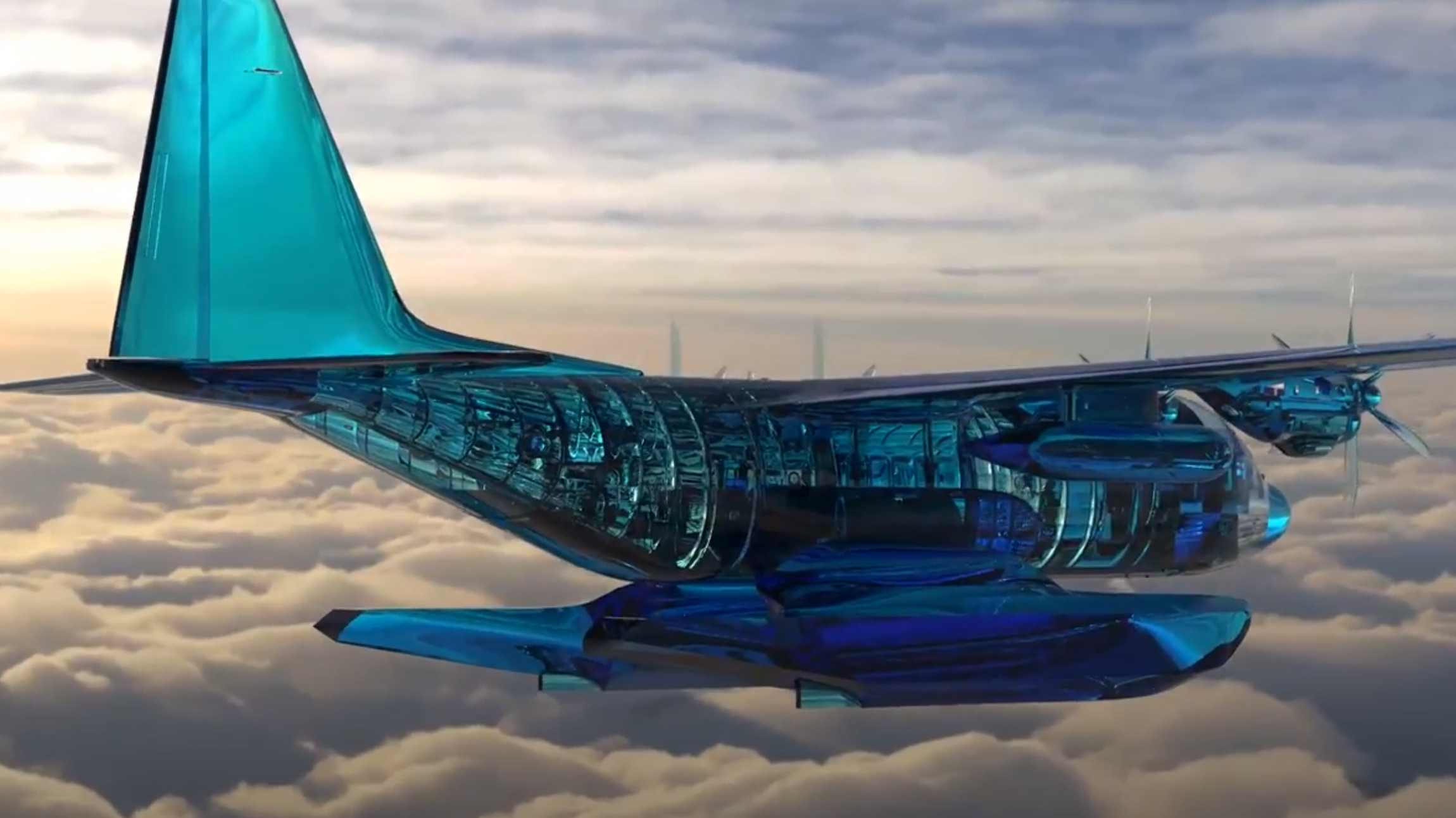
A rendering of an amphibious modification to an MC-130J Commando II. (USAF)
AFA: Air Force Special Operations Command is planning for a live test of a new amphibious capability for its MC-130J transport aircraft in calendar year 2022, according to Lt. Gen. Jim Slife, the organization’s commander.
The goal of the new capability would be to give AFSOC a platform that can land on both sea and land, or as Slife said, a “true amphibious” ability.
“I think it will probably be towards the latter part of [calendar year 2022] that we would love to do a flying demo,” Slife told reporters as part of the annual Air Force Association’s Air, Space & Cyber conference. “And it would really be with a single airplane to prove that we can actually validate the models that we’ve built, to validate the data that we’ve predicted through the digital engineering thread, and then to make some decisions about where we want to go in terms of fielding the capability more broadly.”
The idea of turning a C-130 cargo plane into an amphibious capability has been around for years, but AFSOC signaled it was getting serious about it earlier in the year. The organization expects to have 57 of the MC-130Js, which come with high-end capabilities for special operations, in inventory by 2025.
Slife stressed that the idea is still an “experimentation,” and noted the “very aggressive schedule” in trying to get something ready to fly in 2022. But, he said, his team has “actually done quite a bit of work” on the project, thanks to digital engineering and design tools. “We’ve looked at a number of different configurations to figure out which one has the most promise for us,” he said.
It’s easy to see why having a MC-130J that is capable of landing on the water would benefit AFSOC, and the Pentagon as a whole. With the shift in focus from Afghanistan and Iraq and towards the Pacific, the more versatile an aircraft can be, the easier it is to deploy it.
Notably, Slife called out the need to operate in and around “an island environment that is not serviced by a major fixed operating base runway.” Given the importance of island hopping in any China-related campaign — especially with man-made or recently built up islands in the South China Sea — that comment was telling.
So, what missions could be on top for such a system? In addition to providing logistics support to expeditionary forces, Slife added “the ability to do infiltration exfiltration in a maritime environment from the surface. I mentioned personnel recovery, personnel insertion, perhaps small maritime vessel surface and subsurface insertion, and extractions would be part of that mission.”
That’s all good on paper, of course, which brings back the underlying point that this capability is still very much an experiment.
“With respect to procurement, and what we’re, you know, when we would be fielding this capability, it’s going to depend on how that turns out, and, you know, what the performance tradeoffs would be required in order to feel that capability,” the AFSOC head said. “And so we haven’t made any decisions on whether we would field that for the entire fleet, or [what] number of kits that would be available when needed. We don’t know exactly how we would field that, because we haven’t seen whether that’ll be successful or not.”






















